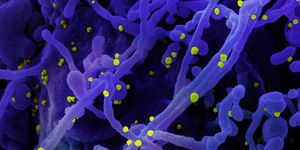A Single-Cell Atlas Provides New Details on the Heart
For the first time, researchers have gained unprecedented insight into the function of the healthy human heart by creating an atlas of the various types of cells that compose the heart, and the genes that those cells express. Almost half a million heart cells work in harmony to supply the body with blood, enabling it to function. Using fourteen healthy donor hearts, a database was generated that now contains information that can help us understand heart disease, which is still the leading cause of death worldwide.
"Now we have a single-cell atlas of the normal human heart, including cellular composition and gene expression," said Gavin Oudit, a Professor in the Faculty of Medicine & Dentistry, Canada Research Chair in Heart Failure, and director of the Mazankowski's Heart Function Clinic and its Human Explanted Heart Program. This is a first major step towards a better understanding of heart disease and treatment, he added.
"What we are working on now is to see how the cell types and gene expression are changed in patients with genetic cardiomyopathies--a significant cause of end-stage heart failure and sudden cardiac death," said Oudit.
Heart cells are not like other cells that can be grown indefinitely in the lab as they are studied. Animal models are typically used to assess them instead, but mouse hearts, maybe the most common model, are quite different from human hearts. Healthy human hearts are also not easy to come by for lab use; most would be used in transplants first. In unusual cases, healthy hearts might be rejected from transplant and then frozen for research purposes instead. Fourteen of these cases provided the samples so that the researchers could sequence the ribonucleic acids (RNA) in the cells, providing a snapshot of active genes in those cells, from nine individual types of cells from six parts of the heart. Seven of the hearts came from men and seven from women.
"For the first time, we have a zip code for each cell to know what population it belongs to," said study author and Howard Hughes Medical Institute Investigator Christine Seidman, a cardiovascular geneticist at Harvard University and director of the Cardiovascular Genetics Center at Brigham and Women's Hospital.
Now scientists can pick out specific mutations to target with therapeutics. "We want to correct those mutations, either with drugs or gene therapy, and start to reverse cardiomyopathies, ideally at an early stage," Oudit said.
Though the sample size of fourteen is small, it still revealed the diverse populations of cells in the heart. The work showed that some parts have more types of cells than we knew, and that females carried more types of a heart muscle cell called cardiomyocytes than the men in the study did.
Seidman noted that these cells might help us understand the sex-based differences in heart disease.
The study is already making an impression on cardiologists. "What we see is striking heterogeneity -- in terms of the diverse cell types that we now know make up the tissue of the human heart, and in terms of the regional differences within the heart," said cardiologist Hugh Watkins of Oxford University in England, who was not on the research team. "It's certainly a much more complicated organ than many might have imagined!"
Sources: AAAS/Eurekalert! Via Howard Hughes Medical Institute, University of Alberta Faculty of Medicine & Dentistry, Nature









